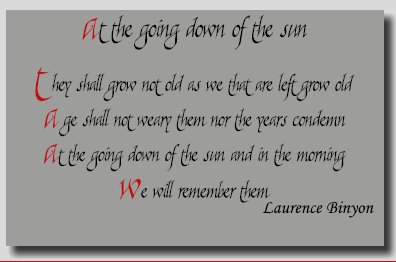articles/Travel/sun-md-page1
At the going down of the sun - part 1 of 1 2 3 4 5 6 7 8
by Marko Dutka Published 01/10/2016

Photography is an act of memory that is both tangible and easily shared. With a multitude of equipment available from camera phones to DSLR cameras, creating memories today is a comparatively easy process.
As photographers, it is our vocation and often our business to create lasting memories for the people who visit us so that their families can in some way be closer to their hearts.
But what happens when the people we wish to remember lived long enough ago not to have been recorded with this ease?
What happens when there are no physical remains? What happens then if those we wish to remember were a part of events that we shouldn’t forget?
In 2014 I was given permission to photograph Commonwealth War Graves and Memorials in Arnos Vale Cemetery in Bristol. It was not an attempt to create a register of these graves. Neither was this a landscape project but rather an exploration of the legacy and consequences of loss on the contemporary British psyche.
For this reason, and inspired by the Laurence Binyon poem, I took the unusual step of photographing these graves at dusk, during the night and in the early morning.
By taking this approach the graves could be seen within a broader view of their environment. The subtle indicators of contemporary human activity such as the glow of distant street lighting could be recorded in contrast to the loneliness of the graves themselves.
The presence of time is also made tangible. The glow of artificial lighting, the light trails left by cars, planes and satellites, the movement of stars all require extensive exposure times that narrate the continuing passage of time, which the occupants of these graves no longer share.
All of the graves in this project have their own small but significant stories.
You are currently on page 1
- At the going down of the sun page 1
- At the going down of the sun page 2
- At the going down of the sun page 3
- At the going down of the sun page 4
- At the going down of the sun page 5
- At the going down of the sun page 6
- At the going down of the sun page 7
- At the going down of the sun page 8
1st Published 01/10/2016
last update 21/07/2022 08:49:44
More Travel Articles
The Society of Photographers Convention and Trade Show at The Novotel London West, Hammersmith ...
You have 9 days until The Society of Photographers Convention Wednesday 14th January 2026





